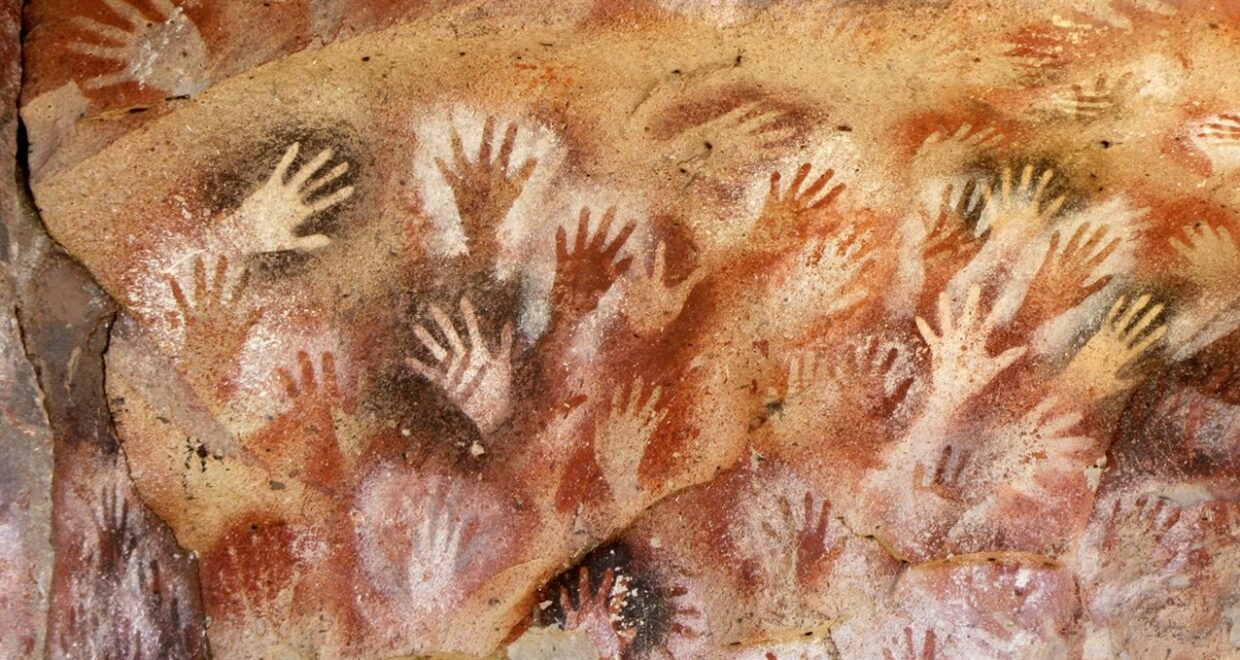Is human handedness the handiwork of kin selection?
Most humans have a preference for—or display a better performance when—using their right hand. This bias has probably existed for around seven million years.
Human handedness is known to be heritable, and 41 genes have recently been identified as having an association with left-handedness. Research has suggested that multiple factors, genetic and non-genetic, have an effect on human handedness, including nutrition, birth season, cultural pressure and neurodevelopment. However, why roughly one in ten individuals are left-handed across human populations still remains a mystery.
Evolutionarily speaking, the low but substantial proportion of left-handers suggests that this may represent a balance between opposing selection pressures. A basic disadvantage for left-handers—for example, due to a disruption of typical brain lateralisation—could be balanced by an advantage that they enjoy only when they are rare, preventing them from going extinct. The most well-known of the possible advantages of rarity is the “combat hypothesis”. This suggests that left-handers enjoy a “surprise” advantage over right-handers during combat, as being in the minority means their opponents will not have much experience of fighting against left-handers. Higher incidences of left-handers have been found among elite athletes in interactive sports, such as tennis, fencing and baseball.
Evolutionary explanations like the “combat hypothesis” assume that human handedness impacts upon fitness through social interaction. At the foundation of the evolutionary study of social interaction is the theory of “kin selection”, yet the role of kin selection in modulating the evolution of human handedness has never been investigated. Our study (now published in Evolutionary Human Sciences, Dong et al 2024) undertakes the first theoretical investigation of how kin selection may shape the biology of human handedness.
What is kin selection?
Natural selection adapts individuals as if for the purpose of passing on their genes to future generations. There are two basic routes through which individuals can accomplish this: first, by promoting their own reproductive success; and, second, by promoting the reproductive success of their genetic relatives, who tend to share alleles in common. The part of natural selection that is driven by the impact of individuals on their genetic relatives’ reproductive success is “kin selection”.
Kin selection has been successfully used to explain why altruism could evolve across the whole tree of life. The logic is often encapsulated as “Hamilton’s rule”, r b > c. This states that altruism can be favoured by selection so long as the fitness cost (c) to the altruist is outweighed by the fitness benefit (b) to the recipient times the genetic relatedness (r) between the altruist and recipient. Hamilton’s rule can also be used to analyse selfish behaviour, where the actor gains benefits while their social partners suffer costs.
How can kin selection modulate left-handedness?
Our analysis shows that evolutionary outcomes depend on whether left-handedness is altruistic or selfish.
If combat occurs within groups of relatives, then left-handedness is expected to be selfish, i.e. the surprise advantage benefits the left-handed individual but imposes a cost on the relatives they are fighting against. Here, higher relatedness is expected to decrease left-handedness.
However if combat happens between groups, where the individual fights against nonrelatives to protect the relatives in their group, then left-handedness is expected to be altruistic, i.e. the left-handed individual suffers the basic cost of left-handedness but the surprise advantage in combat serves to benefit their group. Here, higher relatedness is expected to promote left-handedness.
What determines relatedness?
Genetic relatedness will usually depend on the ecology and demography of the population. A key demographic feature of human populations is dispersal. If individuals have a higher tendency to disperse away from their place of origin and pursue reproductive opportunities within other groups, then this is expected to result in lower relatedness among groupmates.
According to the kin selection logic described above, if left-handedness is selfish (e.g. within-group combat), higher dispersal is expected to be associated with lower relatedness and hence higher incidences of left-handedness; while if left-handedness is altruistic (e.g. between-group combat), higher dispersal is expected to be associated with lower relatedness and hence lower incidences of left-handedness.
Within population differences in human handedness
Furthermore, looking specifically into the dispersal both men and woman, we find sex-biased dispersal can lead to a sex difference in the incidence of left-handedness. For example, when women have a higher rate of dispersal, a woman’s relatedness to her group will typically be lower than a man’s relatedness to his group. Hence, all else being equal, if left-handedness is a selfish trait, female-biased dispersal would favour a higher rate of left-handedness in women than men; while if left-handedness is an altruistic trait, female-biased dispersal would favour a lower rate of left-handedness in women than men.
As well as sex differences in handedness, our analysis also predicts patterns of parental effects and parent-of-origin effects in relation to the genes that underpin human handedness.

Prehistoric (more than 9,000 years ago) hands painting at Cueva de las Manos (“Cave of Hands”) in Santa Cruz, Argentina (credit: https://commons.wikimedia.org/wiki/File:Cueva_de_las_Manos_(6811931046).jpg) shows a dominance of left hands (presumably created by putting left hand on the rock and right hand holding painting tool).
To learn more, read the full article Kin selection as a modulator of human handedness: sex-specific, parental and parent-of-origin effects.
References:
Cuellar-Partida G, Tung JY, Eriksson N, Albrecht E, Aliev F, Andreassen OA, et al.Medland SE 2021. Genome-wide association study identifies 48 common genetic variants associated with handedness. Nature Human Behaviour 5(1): 59-70. https://10.1038/s41562-020-00956-y
Jordan HE 1911. The inheritance of left-handedness. The American Breeders Magazine 2(1): 19-29, 113-124.
Papadatou-Pastou M, Ntolka E, Schmitz J, Martin M, Munafò MR, Ocklenburg S & Paracchini S 2020. Human handedness: A meta-analysis. Psychological Bulletin 146(6): 481-524. https://10.1037/bul0000229
Raymond M, Pontier D, Dufour A-B & Møller AP 1996. Frequency-dependent maintenance of left handedness in humans. Proceedings of the Royal Society of London. Series B: Biological Sciences 263(1377): 1627-1633. https://10.1098/rspb.1996.0238
Uomini NT & Ruck L 2018. Chapter 11 – Manual laterality and cognition through evolution: An archeological perspective. Progress in Brain Research. G. S. Forrester, W. D. Hopkins, K. Hudry and A. Lindell, Elsevier. 238: 295-323.
Image: https://commons.wikimedia.org/wiki/File:Cueva_de_las_Manos_(6811931046).jpg
Authors’ biography:
Bing Dong is a PhD student at University of St Andrews, Scotland. He works on the evolution of human handedness, with mathematical models and bioinformatic tools.






